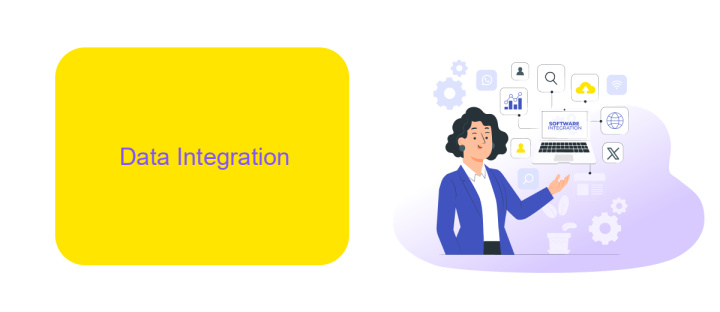Data Integration and Transformation
Data integration and transformation are critical processes in modern data management. They involve combining data from various sources and converting it into a unified format for analysis and decision-making. Effective data integration ensures consistency and accuracy, while transformation tailors the data to meet specific needs, enabling organizations to derive meaningful insights and drive strategic initiatives.
Introduction
Data integration and transformation are critical components in the modern data-driven landscape. Organizations today rely on diverse data sources and formats, necessitating efficient methods to consolidate and transform this data into actionable insights. Effective data integration ensures seamless data flow between systems, enhancing decision-making and operational efficiency.
- Consolidation of data from multiple sources
- Transformation of data into a consistent format
- Improved data quality and accuracy
- Enhanced data accessibility and usability
Tools like ApiX-Drive facilitate seamless data integration and transformation, allowing businesses to automate data workflows without extensive coding. By leveraging such platforms, organizations can streamline their data processes, reduce manual errors, and gain real-time insights. As data continues to grow in volume and complexity, the importance of robust data integration and transformation solutions cannot be overstated.
Data Integration

Data integration is a critical process in modern data management, enabling the seamless combination of data from various sources to provide a unified and comprehensive view. This process involves extracting data from disparate systems, transforming it into a consistent format, and loading it into a target system. Effective data integration ensures that organizations can leverage their data for better decision-making, improved operational efficiency, and enhanced customer experiences.
To streamline the integration process, various tools and services are available. One such service is ApiX-Drive, which facilitates the automation of data integration between different applications and platforms. ApiX-Drive allows users to set up integrations without extensive coding knowledge, making it accessible for businesses of all sizes. By using ApiX-Drive, organizations can save time and resources, ensuring that data flows smoothly and accurately between systems, ultimately supporting better data-driven strategies.
Data Transformation

Data transformation is a crucial step in the data integration process, as it involves converting data from various sources into a consistent format suitable for analysis. This process ensures that disparate data sets can be combined and analyzed effectively, leading to more accurate insights and decision-making.
- Data Cleaning: Removing errors and inconsistencies to ensure data quality.
- Data Normalization: Standardizing data formats for consistency.
- Data Aggregation: Combining data from multiple sources for comprehensive analysis.
- Data Enrichment: Enhancing data with additional information for deeper insights.
- Data Filtering: Selecting relevant data to meet specific criteria.
Tools like ApiX-Drive facilitate data transformation by automating many of these tasks, allowing businesses to integrate and transform data from various sources seamlessly. By leveraging such services, organizations can focus on analyzing data rather than spending time on manual data preparation. This leads to more efficient workflows and better resource allocation, ultimately driving business growth.
Challenges and Considerations

Data integration and transformation present numerous challenges that can significantly impact the efficiency and accuracy of data-driven initiatives. One primary concern is the compatibility of different data sources, as disparate systems often use varied formats and structures. Ensuring seamless integration requires meticulous planning and robust tools.
Another critical consideration is data quality. Inconsistent or erroneous data can lead to flawed analyses and poor decision-making. Maintaining data integrity throughout the integration process is essential for reliable outcomes.
- Data compatibility issues
- Ensuring data quality and integrity
- Scalability and performance concerns
- Security and compliance requirements
Tools like ApiX-Drive can simplify the integration process by providing a user-friendly interface and automated workflows. Such services help bridge the gap between different systems, ensuring that data flows smoothly and efficiently. However, selecting the right tool requires careful evaluation of its capabilities in relation to the specific needs of the organization.
- Automate the work of an online store or landing
- Empower through integration
- Don't spend money on programmers and integrators
- Save time by automating routine tasks
Conclusion
In conclusion, the processes of data integration and transformation are pivotal for organizations aiming to harness the full potential of their data. Effective data integration ensures seamless connectivity between disparate systems, while robust data transformation guarantees that the data is in a usable and valuable format. As businesses continue to evolve, the demand for efficient and scalable solutions will only increase.
Tools like ApiX-Drive play a crucial role in simplifying these processes, offering user-friendly interfaces and automated workflows that reduce the complexity of integrating various data sources. By leveraging such services, companies can focus more on deriving insights and making data-driven decisions rather than getting bogged down by technical challenges. Ultimately, mastering data integration and transformation is essential for achieving operational efficiency and gaining a competitive edge in the modern data-driven landscape.
FAQ
What is data integration?
Why is data transformation important in data integration?
How can I automate data integration and transformation processes?
What challenges might I face during data integration?
How do I ensure data security during integration?
Time is the most valuable resource in today's business realities. By eliminating the routine from work processes, you will get more opportunities to implement the most daring plans and ideas. Choose – you can continue to waste time, money and nerves on inefficient solutions, or you can use ApiX-Drive, automating work processes and achieving results with minimal investment of money, effort and human resources.


